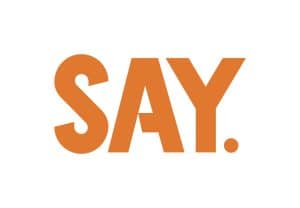HARNESSING TECHNOLOGY TO TRANSFORM HEALTHCARE IN THE DIGITAL AGE
March 5, 2020 |
THE IMPACT OF TECHNOLOGY IN HEALTHCARE
Cutting-edge technology is rapidly changing the healthcare landscape. When you look closely at the rate and level of innovation brought about by tech over the past few years it is mind-blowing; from enhancing medical capabilities, widening the scope of treatment options, to changing the way we communicate with our healthcare professionals (HCPs) and vice versa.
To illustrate just how far we have come, consider the leap from the first successful implantation of a temporary artificial heart in a human in 1982, to the world’s first 3D-printed, bio-engineered heart in April 2019, to where we are now – a bionic hybrid heart developed in January this year. With the lack of organ donations a global issue, the potential impact on patients’ lives is remarkable, and although not yet the perfect solution, the development represents a huge leap forward in our capabilities.
TECHNOLOGIES PREDICTED TO REVOLUTIONISE HEALTHCARE IN 2020
With many exciting technologies already available or within reach, below are some developments that really sparked my interest, and which hold real promise in 2020:
- VR-enabled mental health therapy: The Mental Health Foundation now estimates that 1 in 6 people every week experiences a common mental health issue. Virtual reality therapy allows people to navigate through digitally rendered environments and complete specific tasks depending on their condition. This technology has applications for fears and phobias, in depression, anxiety, PTSD and even schizophrenia.
- Prosthetic limbs that allow you to ‘feel’: New prosthetic limbs are being developed capable of sending signals to your nerves through an array of sensors, allowing them to mimic the feeling of standing on a surface or grabbing an object. This could allow people to perform delicate tasks that they are currently unable to complete, and massively increase capabilities for someone with a prosthetic limb.
- 5G: The data transmission speed and low latency of 5G holds the potential to wirelessly transfer a doctors’ physical skills to another remote location; a doctor in Germany could guide a doctor in the UK performing a procedure using haptic-feedback gloves that let you feel what the other person is touching. ‘Connected ambulances’ like this one demonstrated by the South Central Ambulance Trust could allow remote specialists to view a patient in real time and deliver treatment instructions as if they were at the scene.
- Engineered hearts: Mentioned above, 3D printed bio-engineered hearts created from a patient’s own cells remove the need for a donor heart, and minimise the chances of rejection, limiting the need for life-long anti-rejection medication. The bionic hybrid heart was developed for use by engineers, rather than for use as a transplant organ, however the applications are no less impressive. This hybrid heart functions so closely to a normal heart that it could be used to accurately test prosthetic solutions for those with heart conditions.
COMMUNICATION IS KEY TO DRIVE ADOPTION OF HEALTH TECH
Given the rapid rate at which technology is advancing and its scope to impact on most, if not all, aspects of healthcare, it’s important for us to consider the way we communicate about health tech. As a consumer I feel that today we are so overloaded with innovative and exciting technologies that it can sometimes be tricky to separate those game-changing ideas from the rest of the pack. If a company is communicating to me about a new technology, I want to know what problem it solves and how, why that problem is worth solving, and – if it’s not the first of its kind – why it solves that problem better than its competitors. If you can tick those boxes rather than just labelling your product ‘leading’ or ‘pioneering’, I’m in.
Effective communication around the value of technology is also key for the NHS. Some people are apprehensive about the larger role tech now plays in healthcare, with many unwilling to trust AI and more than 50% of consumers sceptical about the benefits of healthcare information technologies. The challenge lies in showing these people that the advantages outweigh their perceived risks. For example, if we can use better tech to minimise the time HCPs spend logging in, or on outdated admin tasks, we can maximise the time they are able to spend with patients who need it.
Secretary of State for Health, Matt Hancock, famously pro-tech, put it quite well in a recent address to the UK Healthtech Alliance. While not undervaluing the urgent need for more staff, he raised the point that embracing technology is the only way to make the NHS sustainable in the long term. Giving an example of a hospital without an electronic patient records system, he explained how a doctor had to find a patient’s chart and then decipher the handwriting on it – all the while the patient was in cardiac arrest! We cannot underestimate the time, manpower and lives that improved health tech systems within the NHS can potentially save, and by communicating this we can encourage others to see that value.
As a comms professional, considering the way we communicate about healthtech is vital. We have an opportunity to make our clients and their products stand out amongst the noise in the market, effectively communicating benefits and demonstrating their value both to consumers and to other businesses. Wider than this, we have a duty to accurately distil and communicate how exciting and significant some of these technological advances are and ensure that they get the recognition they deserve.
This content was provided by Say Communications





